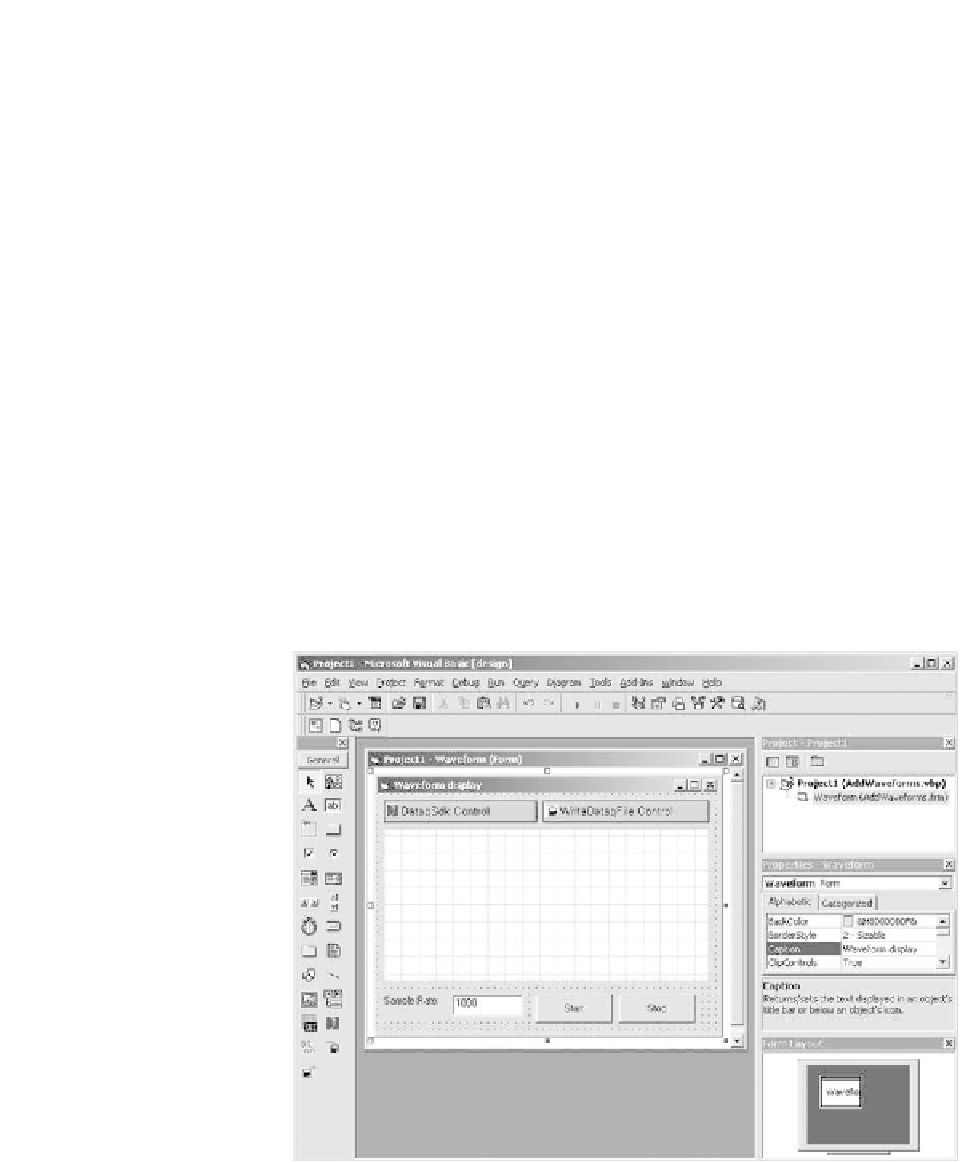Hardware Reference
In-Depth Information
application. In such cases, it may be possible to extend the language using
proprietary components that are available 'off-the-shelf '. Such components
include specialized controls for use with Visual programming languages as
well as dynamic link libraries and ready-built procedures that can be used to
add functionality to a program. In recent years a number of 'third-party' sup-
pliers have risen to the challenge of producing such extensions and this has
added considerably to the pool of resources available to the software developer.
The ActiveX control standard defined by Microsoft describes modular,
reusable software components that can be used universally by any environ-
ment that supports the standard. For example, without modification, the same
controls may be used by Visual BASIC, Visual C
++
, National Instruments
LabVIEW, CEC TestPoint, Borland C
++
Builder, Excel, and many more.
As an example, the DATAQ Instruments' ActiveX control library consists of
five components, each addressing a different application area. Context-sensitive
on-line help is provided for each control. DATAQ Instruments' ActiveX control
library supports a wide variety of DATAQ products including the DI-148U, DI-
150, DI-151, DI-154RS, DI-158 Series, DI-190, DI-194RS, DI-195B, DI-4xx,
DI-5xx, and DI-7xx products.
The universal nature of the ActiveX control standard ensures a consis-
tent and highly simplified software-to-hardware interface that yields pro-
gramming code that is tremendously reduced in both size and complexity
(Figure 10.2). This approach to application development can also be highly
cost-effective.
Figure 10.2
Using Visual Basic to develop an application using an ActiveX
control supplied by DATAQ. The control simplifies the task of plotting
time-related waveforms of captured data

